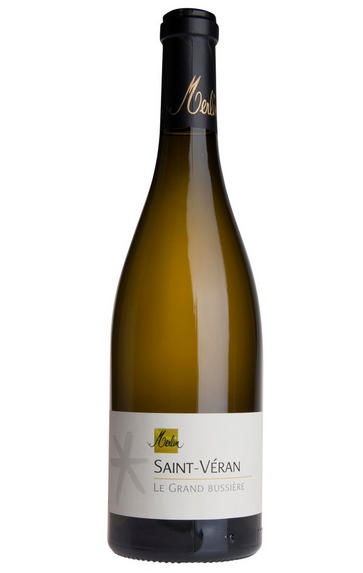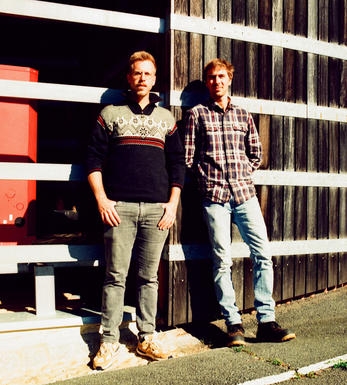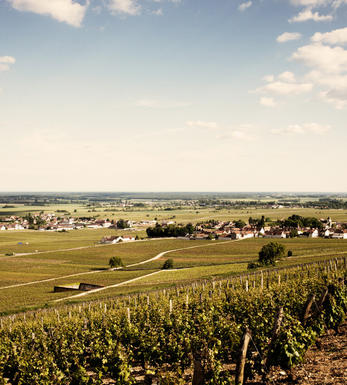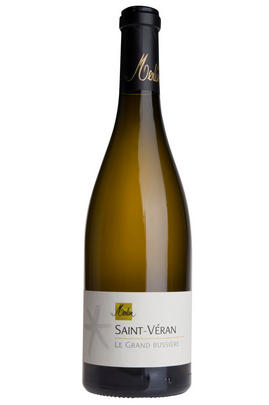
About this WINE

Olivier Merlin
Olivier Merlin is widely regarded as being one of the very finest winemakers in the Mâconnais. He and his wife Corinne began in 1987 by renting 4.5 hectares. from René Gaillard, of Domaine du Vieux Saint-Sorlin, who wished to retire. Since then, Olivier has been buying the property in stages as well as adding new vineyards such as St Véran (in 1994 and ‘96). In September ‘97 Olivier took out a négociant's licence in order to be able to make some Pouilly Fuissé, since land in this appellation is neither available to buy nor to rent.
He makes three cuvées of Pouilly-Fuissé (one each from Fuissé, Vergisson and Chaintré) and a Viré-Clessé. From 2000 some Moulin-à-Vent joined the stable. The single-vineyard wines, including Mâcon-La Roche Vineuse, Les Cras and St Véran, Le Grand Bussière, get 18 months’ barrel-ageing with 30 to 50% new wood.
Olivier has established a reputation as one of the region’s most dynamic growers, a reference point for the Mâconnais. The whites demonstrate his exceptional winemaking talents, and the potential of “lowly” appellations. They are frequently taken for Côte d'Or wines if tasted blind. His Bourgogne Rouge is at its best after two to three years when the fruit expresses itself fully.
Olivier and Corinne have recently been joined at the domaine by their sons, Théo and Paul, who have completed their winemaking studies, and also spent time working at wineries in the Mornington Peninsula. With this extra manpower at the domaine’s disposal, Olivier has acquired a handful of new parcels including the Clos de France, in the heart of the village of Vergisson (2018 will be the inaugural vintage of the eponymous single-vineyard wine).
Discover the story behind our Own Selection Pouilly-Fuissé, made for us by Olivier. Read more

Saint-Véran
Saint-Véran is the southernmost appellation of the Mâconnais region of Burgundy, and consists of two areas, divided by the lands of Pouilly-Fuissé, that produce a dry white wine. Named after the town of Saint-Vérand which is included inside its jurisdiction, an administrative error in 1971, the year of the formation of the AOC, meant that Saint-Véran lost the‘d’ at the end of its name.
Saint-Véran produces both white and red wines, but due to its unique position as the most southern appellation of Burgundy, it technically overlaps into the northern boundary of Beaujolais, meaning that some of its communes produce reds to be sold as Beaujolais Cru, but whites to be sold as Burgundian, due to the inferred superiority over the more generic Beaujolais Blanc AOC.
Saint-Véran whites are generally well-regarded amongst the wine community, indeed their qualities were realised prior to its official classification as an appellation in 1971 by many aficionados.
They are all made from Chardonnay variety in the customary Burgundy fashion, but are known to be slightly more full-bodied than other varieties of white Burgundy. Notable changes occur during aging: Saint-Véran whites go from a floral and fruity youth to a nuttier and honeyed maturity. As with many wines from the Mâconnais region they also often display notes of minerality, something which is greatly desired.

Chardonnay
Chardonnay is often seen as the king of white wine grapes and one of the most widely planted in the world It is suited to a wide variety of soils, though it excels in soils with a high limestone content as found in Champagne, Chablis, and the Côte D`Or.
Burgundy is Chardonnay's spiritual home and the best White Burgundies are dry, rich, honeyed wines with marvellous poise, elegance and balance. They are unquestionably the finest dry white wines in the world. Chardonnay plays a crucial role in the Champagne blend, providing structure and finesse, and is the sole grape in Blanc de Blancs.
It is quantitatively important in California and Australia, is widely planted in Chile and South Africa, and is the second most widely planted grape in New Zealand. In warm climates Chardonnay has a tendency to develop very high sugar levels during the final stages of ripening and this can occur at the expense of acidity. Late picking is a common problem and can result in blowsy and flabby wines that lack structure and definition.
Recently in the New World, we have seen a move towards more elegant, better- balanced and less oak-driven Chardonnays, and this is to be welcomed.



Buying options
Add to wishlist
Description
Lovely sensual, sunny bouquet, not over musky and picked early without a single grain of rot. The flavour swells to the back of the palate. A really beautiful finish, very exciting.
Jasper Morris, MW - Wine Buyer
Poor spring with difficult flowering, though this varied from one vineyard to another. Old vines suffered worse. The reds were later to flower, with better results, and for the first time were picked after the whites, which needed to be harvested quickly before rot set in. The balance of the whites has ended up quite similar to 2012, with the same acidity but the fruit more exuberant in style. One technical note on quality: Olivier presses his whites for much longer now, which intensifies the dry extract and will preserve longevity.
wine at a glance
Delivery and quality guarantee